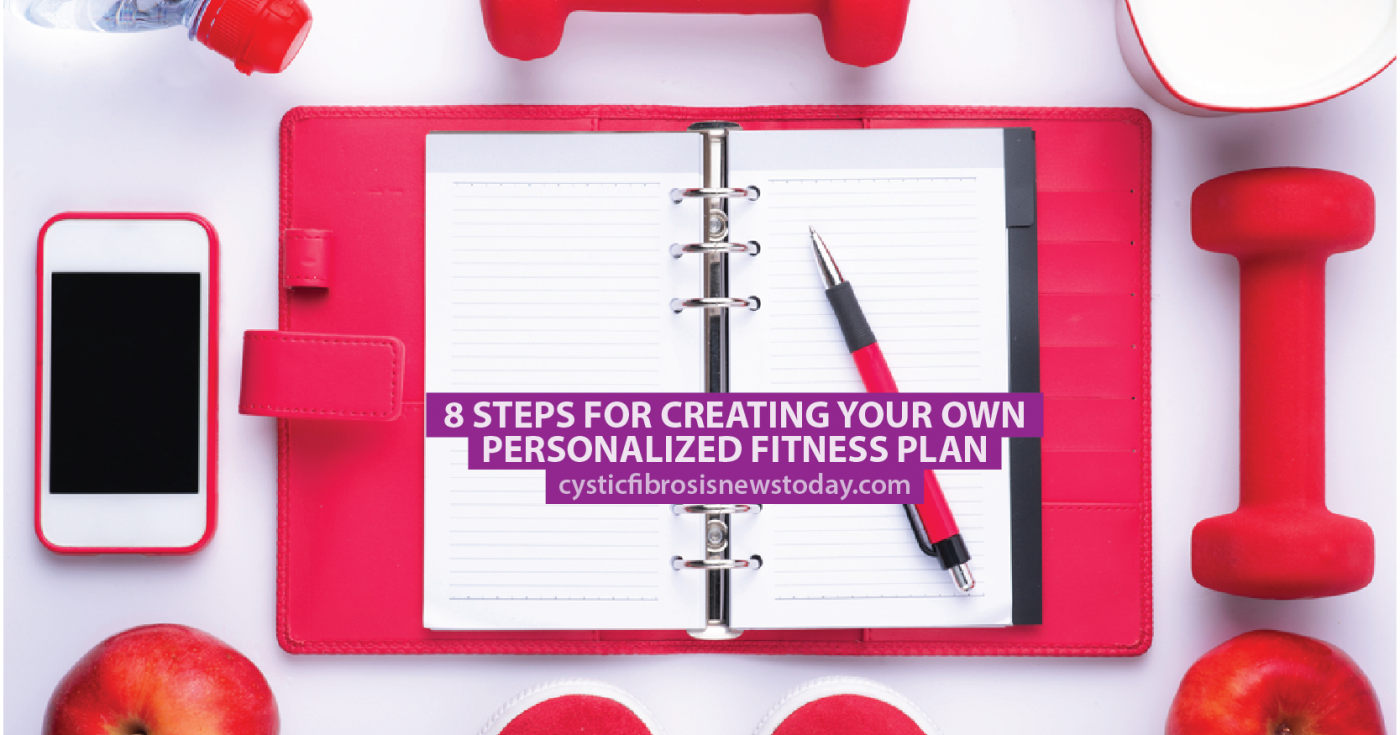8 Steps for Creating Your Own Personalized Fitness Plan
Written by |

Keeping physically fit and active is important for people living with cystic fibrosis, but there is no “one size fits all” approach. Many people start off with good intentions but their plans soon fall apart, often because they haven’t fully thought out all aspects of their routine or they try to do too much too soon. If you plan your approach to fitness properly, you’ll soon see great results.
We’ve put together a list of points to consider when planning your fitness regimen using information from the Cystic Fibrosis Foundation.
1. Speak to your health care team.
It’s important that you get the OK from your health care team before you embark on any fitness journey. You may want to speak to a physical therapist who can help you get started and point you in the right direction. They’ll be able to suggest some activities you can do with your level of fitness that will help build muscle strength and increase lung function.
You will need to have your lung function retested periodically to see if your fitness plan is helping as much as it should be.
2. Decide which activities you want to do.
The key to a successful fitness plan is to pick activities and sports that you enjoy. If you’re having fun, you’re more likely to turn your plan into a lifestyle. If you prefer working out alone, consider exercises like swimming, cycling, walking and running. If you’d like your fitness activities to be more social then consider joining an exercise class.
3. Consider your exercise dose.
Your health care team should be able to establish how many calories you should be burning each week and then tailor your fitness plan around that goal.
4. Go slow.
If you’re fairly new to exercise then you need to approach it with caution. Take the time to build your stamina up slowly, increasing your strength and endurance over time. This will help minimize the risk of injury, and setting small goals each week will give you the drive to continue. Tracking your progress will show you have far you’ve come and motivate you to continue.
5. Make sure you stretch.
Stretching is an important part of any fitness plan and a step that should not be missed if you want to avoid injury. Dynamic stretches warm up the muscles before a workout and get the heart pumping, whereas static stretches should be done at the end of the workout as part of your cool-down routine.
MORE: Nine important exercise tips from active CFers.
6. Eat salty snacks.
If you’re sweating more due to exercise, you’ll be losing more salt through your sweat. Counter this by eating salty snacks like peanuts, pretzels and cheese and by drinking sports drinks with electrolytes.
7. Eat enough.
You may need to increase your food intake to balance out the amount of calories you’re burning. Your health care team will be able to advise you on how many extra calories you need. Try to increase your calories through healthy food choices.
8. Stay hydrated.
Everyone who exercises needs to stay hydrated, and this is especially important for people with cystic fibrosis. Carry a chilled bottle of water around with you if you’re exercising outdoors. Load up on fluids before and after exercising and limit alcohol, caffeinated and carbonated drinks which can dehydrate.
MORE: Eight tips for staying hydrated with cystic fibrosis.
Cystic Fibrosis News Today is strictly a news and information website about the disease. It does not provide medical advice, diagnosis or treatment. This content is not intended to be a substitute for professional medical advice, diagnosis, or treatment. Always seek the advice of your physician or other qualified health provider with any questions you may have regarding a medical condition. Never disregard professional medical advice or delay in seeking it because of something you have read on this website.






